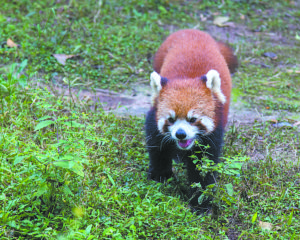By Debi Lander
mail@floridanewsline.com
“You’re going all the way to China and not seeing the Great Wall or the Terracotta Warriors?” asked my daughter.
“Well, yes,” I replied, “but I’m going to see pandas!” China is the only place where the endangered Giant Pandas live.
It was a 14-hour flight from JFK to Shanghai, followed by a connecting jaunt to Chengdu. Chengdu is home to the Giant Panda Research and Breeding Center, as well as 14 million people. New York City on the other hand, has fewer than nine million, but most Americans have never heard of this Chinese metropolis.
Chengdu is the capital of the Sichuan Province, known for silk brocade, the Sichuan Opera and the first place in the world to print paper money. Today, sleek and modern skyscrapers soar above downtown sidewalks and glow with sophisticated digital illumination at night. The city flaunts its New Century Global Center, the largest shopping mall in the world. It’s twice the size of the previous mall record holder in Dubai. Traffic is congested, but there are lovely green parks and some elegant temples.
I journeyed to see the pandas and headed to the Panda Base one morning. The complex is a 92-acre sanctuary of bamboo and other flowering plants. Electric trams move visitors between the lush viewing locations, museums and dining facilities.
First stop, the nursery. Unfortunately, I visited in November and babies are born in late spring to summer, so I didn’t see any newborns except on video. A mama panda weighs about 200 or more pounds, yet her offspring at birth weigh only five ounces. These bitty babies are approximately one one-thousandth of their mother’s weight. Most pandas deliver just one baby. The cubs are fragile and delicate until they are about six months old.
The Chengdu Breeding Program has been very successful at artificial insemination and raising newborns including twins, thus increasing the Giant Panda population. China lends some of these pandas to other zoos. So far, none have been released into the wild because their numbers remain low.
Outside the nursery, breakfast was being served and I had a fantastic view of these adorable creatures crunching on their meal. Pandas must consume between 35 and 65 pounds of bamboo per day using special stomach enzymes to digest it. They only absorb about 20 percent of the nutrients. I watched as they quickly bit off a piece, sucked out the juice and then let the fibrous material fall out of their mouth. When they found softer shoots, they chewed longer and swallowed more.
When not eating, the bears conserve their energy by sleeping. Some prefer to do that in trees and it’s enthralling to watch these cuties climb.
I later returned to the nursery area finding three youngsters outside and sleeping on an outdoor platform. It’s hard to restrain yourself from jumping over the barrier and hugging them. They’re beyond precious; no wonder pandas are universally loved.
I also visited a habitat where red pandas (they looked more orange to me) scampered about. These fellas are much smaller, very quick, and seem to love playing hide and seek.
Despite the tourists, the entire facility feels calm, open and airy. The museum and film are good, not great, and a gift shop sells panda paraphernalia.
Visit www.bylandersea.com to read more of local travel writer Debi Lander’s stories and travel tips.
Photos courtesy Debi Lander
A panda with bamboo at Chengdu Breeding Program.
 A red panda at the Panda Base.
A red panda at the Panda Base.











